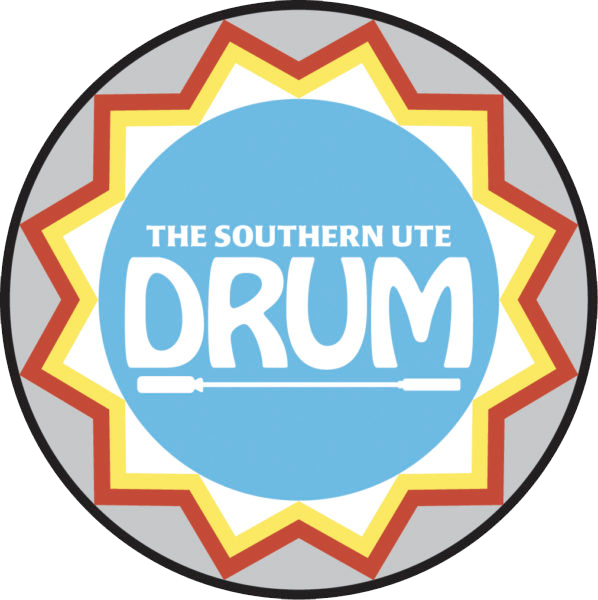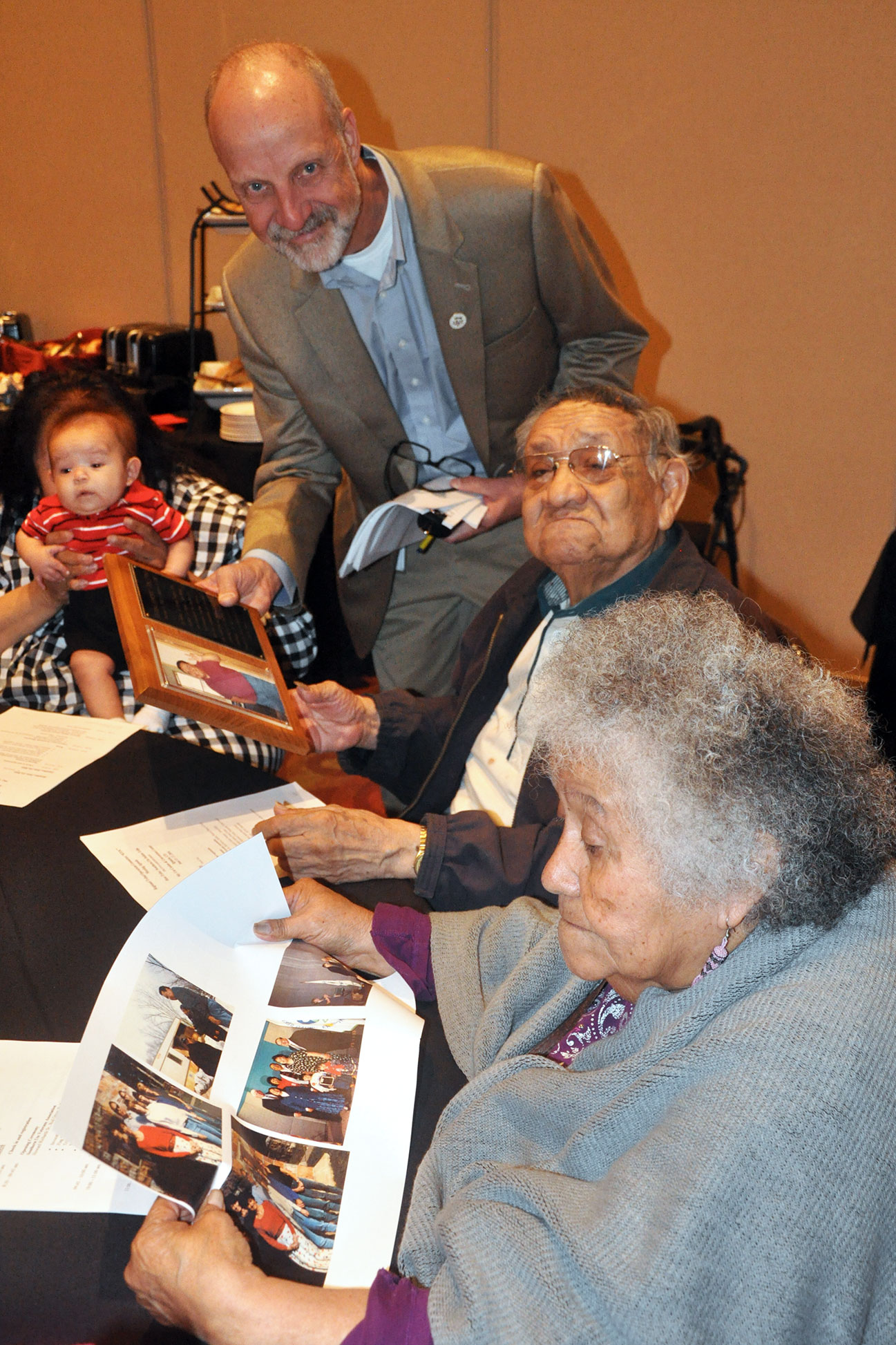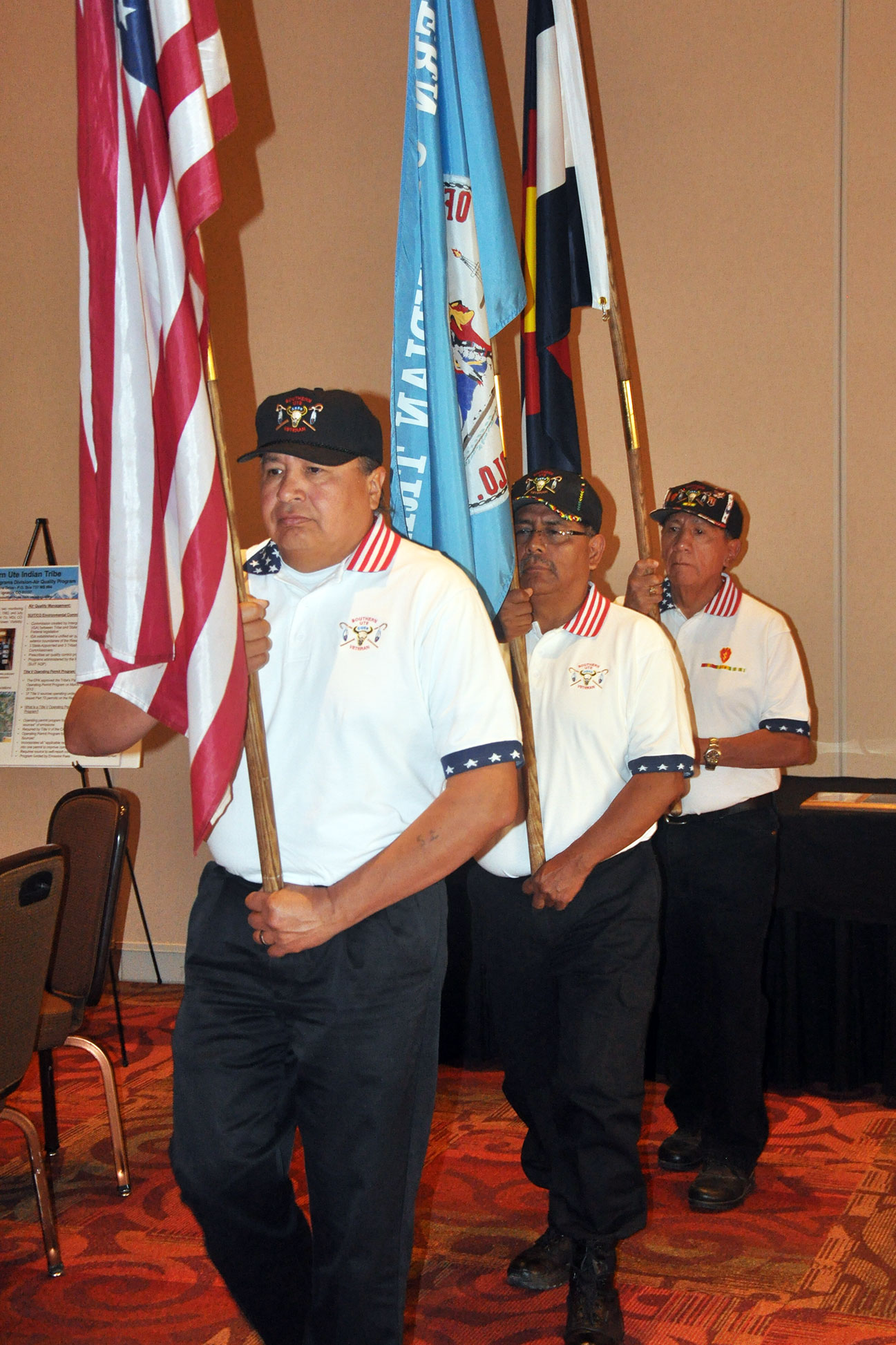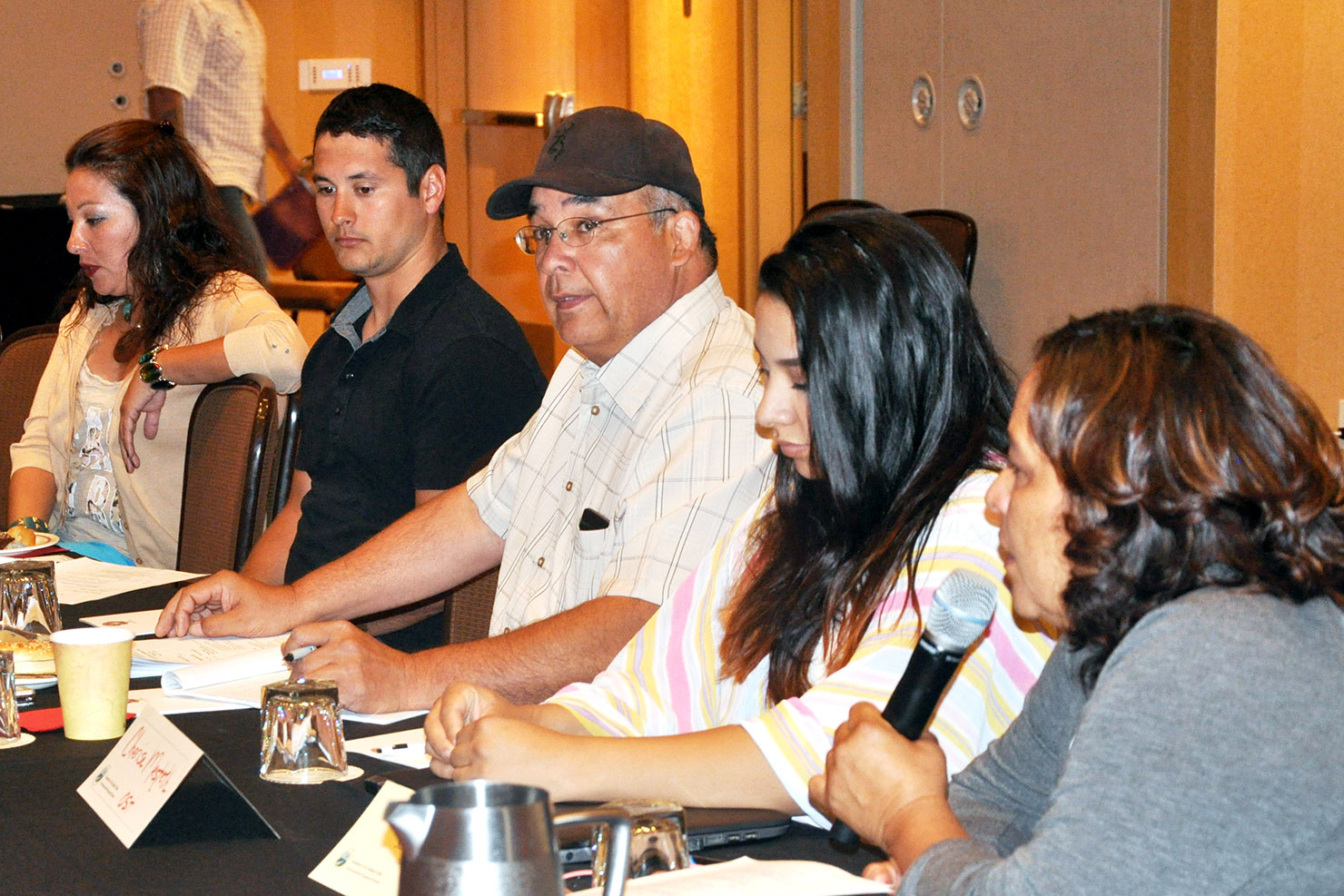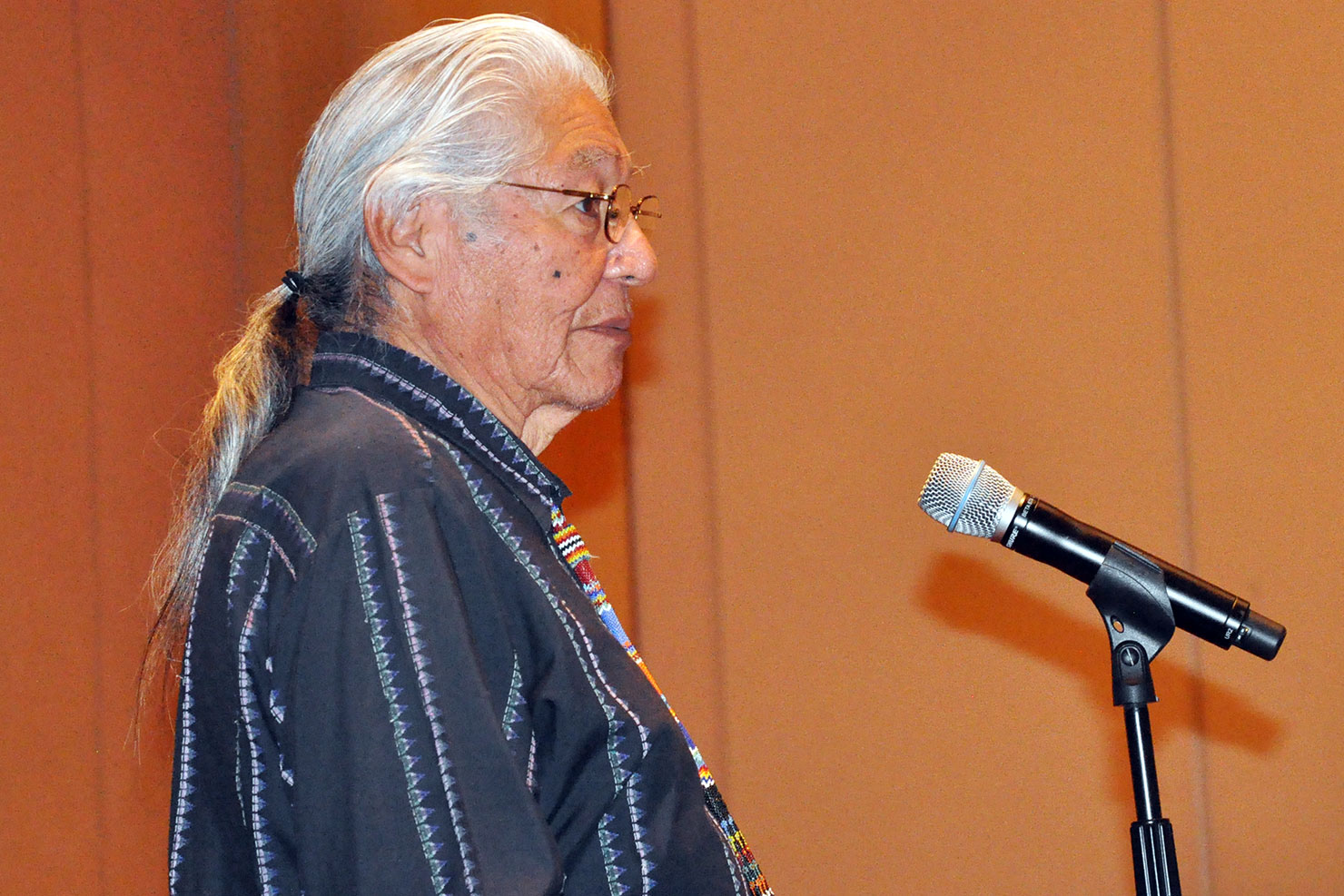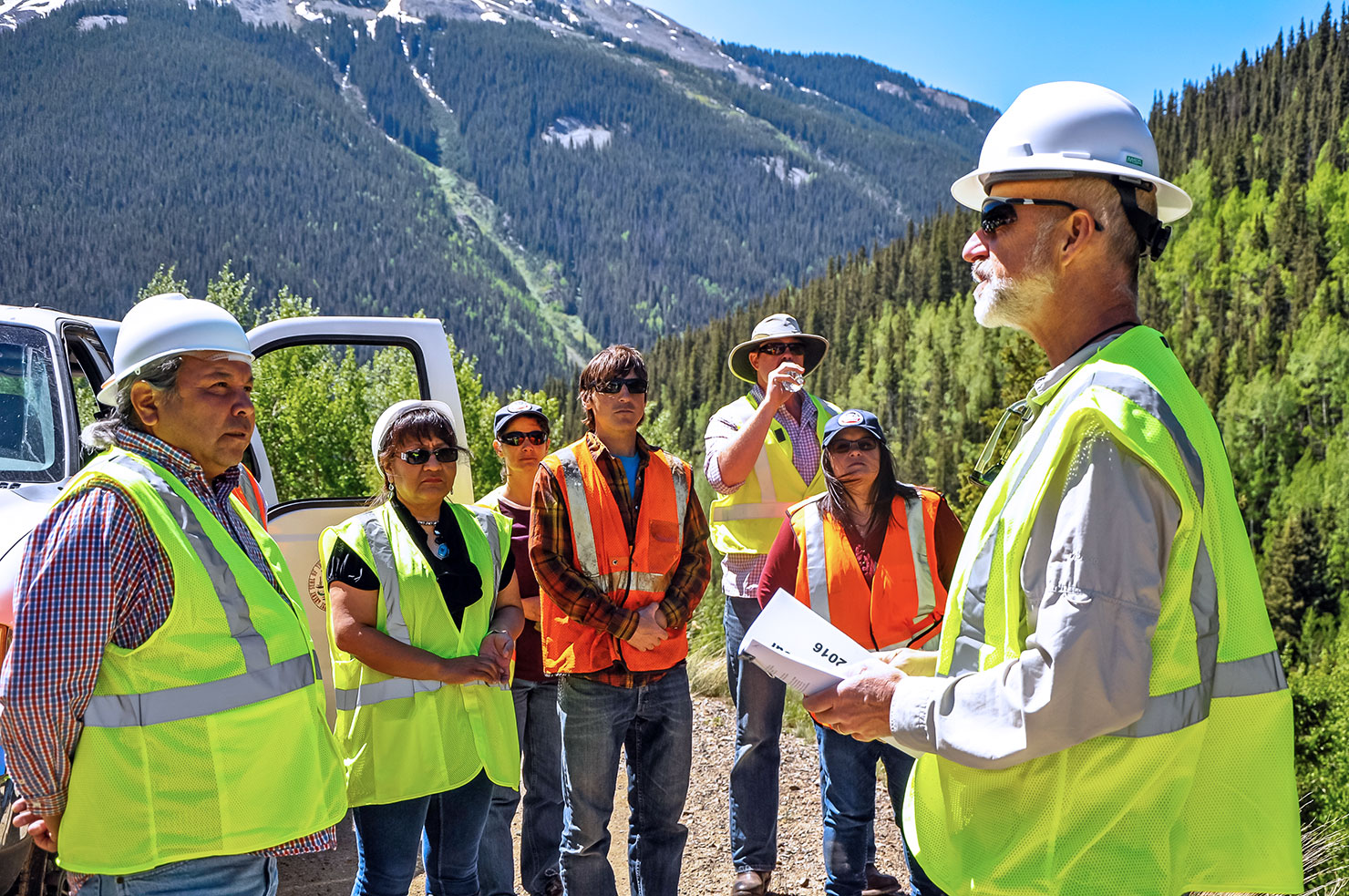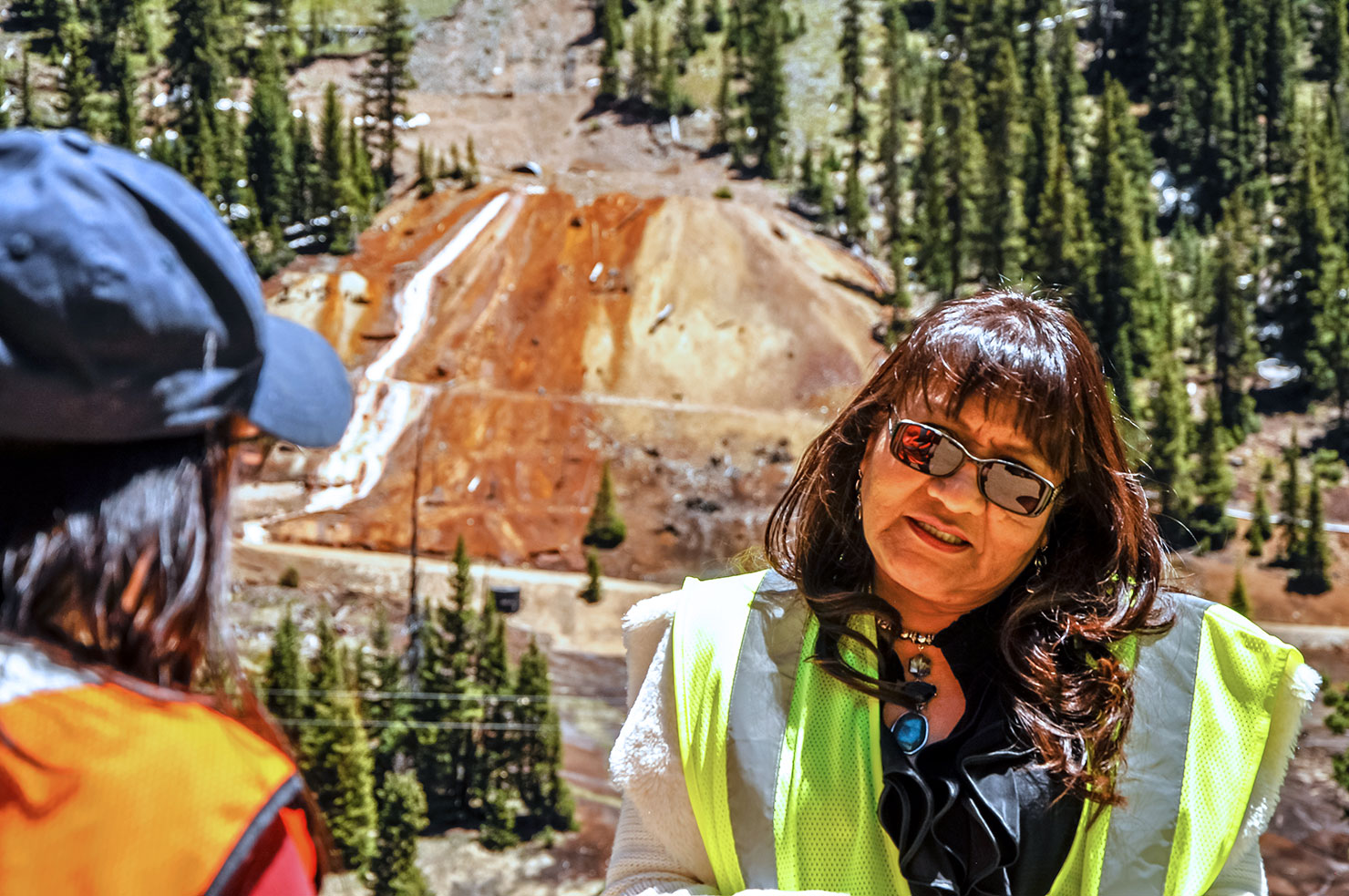The Environmental Programs Division (EPD) hosted the summer meeting of the Regional Tribal Operations Committee (RTOC), June 14 – 16 at the Sky Ute Casino Resort Events Center. The RTOC is a working committee of environmental directors from the 27 tribal nations in EPA Region 8 and EPA Region 8 representatives that help to build environmental capacity and support implementation of ongoing tribal environmental programs. The RTOC promotes tribal environmental priorities and funding in EPA regional priorities and budget decision-making. The RTOC members take turns in hosting the meetings to allow participants to experience the environmental issues of concern in Indian Country. The theme of this meeting was: Emergency Preparedness.
The opening ceremony included welcoming remarks from Tribal Councilman Tyson Thompson, presentation of the flags by the Southern Ute Veterans Association, an invocation from Tribal elder Alden Naranjo, and flag and honor songs from the Yellow Jacket drum group.
The meeting also included the recognition of the late Michael Frost and his work and vision for the Southern Ute Indian Tribe’s Environmental Programs Division. Many of the RTOC representatives worked with the late Mr. Frost and addressed the Frost family in attendance.
The first day of the Emergency Preparedness Conference consisted of a keynote presentation by Peter Butler, of the Animas Stakeholders Group, on the existing environmental conditions of the Silverton Mining District and how we came to a Superfund decision.
Tom Johnson, EPD Division Head, presented the Tribe’s response to the Gold King Mine Spill and lessons learned for environmental directors. Curtis Hartenstine, Water Quality Program Manager, presented a discussion on tribal water quality standards and results of the tribe’s Water Quality Program sampling on the Animas River.
The second day, the Tribe’s Air Quality Program presented information on the tribe’s Environmental Leadership Knowledge Seminar (E.L.K.S.) that is open to tribal youth. Also, featured was a presentation and group discussion from Lanny Holms, Federal Emergency Management Agency (FEMA), a virtual tour of the Gladstone interim water treatment plant by Laura Jenkins, EPA Region 8 Media Officer, and an oil pipeline spill tabletop exercise and group discussion with Craig Myers, EPA Region 8 – Myers was the incident commander on the Gold King Release.
The RTOC membership presented Alfreda Mitre, retiring EPA Region 8 Tribal Assistance Program Director, appreciation gifts and words of thanks for the years Mitre dedicated to the Region 8 tribes and Indian Country.
“Ms. Mitre advocated for [Tribal Nations], our needs, how we live can’t be taught. A lot of us would not be where we are without Alfreda. We wish you the very best on retirement and on your trail,” Michael Durglo, Jr., CSKT member and RTOC Chairman said.
Mitre, a Las Vegas Paiute replied, “I am a federal employee right now, but I am Indian forever. We have the connection to the land.”
The final day of the conference included a site tour in Silverton, Colorado with EPA Superfund staff. Remediation of the environmental damage due to the Gold King Mine spill in August 2015 was the main focus of the tour. Road stops on the tour included, a Ferricrete rock outcrop exposure, an abandoned mill tailing pile, a roadside tour of the Gladstone water treatment plant and the Red & Bonita Mine. The tour allowed for an active question & answer session for the RTOC attendees and EPA staff.
The RTOC attendees and their tribal nations face similar environmental issues, whether it be housing remediation due to meth production, lack of grant funding or water contamination due to oil and gas production or transport.
Allyson Two Bears, Standing Rock Sioux Tribe, voiced her concern and frustration of the proposed construction of the Dakota Access Pipeline a/k/a Bakken Pipeline that will carry oil under the Missouri River. The proposed pipeline is less than one fourth mile from the Standing Rock Reservation boundary. The Standing Rock Nation was never consulted or given the opportunity to comment on the initial Environmental Impact Statement (EIS) for the pipeline. The proposed pipeline has the potential for leaks and spills, which may have an impact on the native riparian plant habitat used for ceremonial purposes, food harvests, and the drinking water for all stakeholders downstream.
